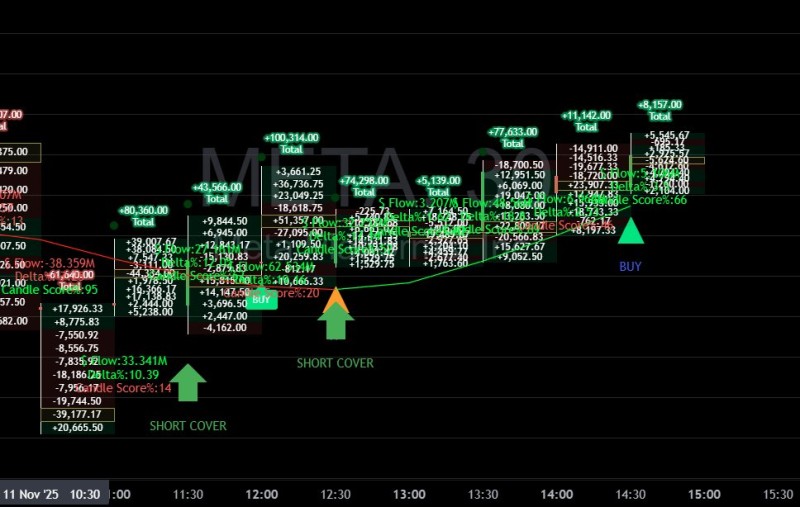A strong wave of buying pressure hit Meta Platforms stock during today's session, suggesting that buyers are gradually taking control after a shaky morning. The order-flow data backs this up, showing steady accumulation throughout the midday and afternoon hours. What we're seeing is persistent demand building momentum, with several bullish triggers appearing as the day progressed.
Order Flow Points to Growing Demand
The intraday tape tells a clear story. META's chart shows a consistent uptick in buy-side pressure, with large positive deltas appearing throughout the session—including readings of +43,566, +100,314, and +77,633. Earlier in the day, we saw multiple short-covering phases that helped ease the downward pressure and made room for buyers to step back in.

The BUY markers that popped up later confirm where bullish sentiment really kicked in, while the green volume clusters show sustained buying interest rather than sporadic trading.
What's Driving META's Intraday Move
The early session featured several SHORT COVER signals, indicating bears were closing out positions as the stock found its footing. This type of sequence often sets the stage for a bounce, and that's exactly what happened here. From midday onward, the delta profile turned decisively positive. Large blocks of green volume and steady buy-side flow showed traders were accumulating rather than selling. A clear BUY signal around 14:30 marked the turning point where buyers overpowered earlier selling. The gentle upward slope of the intraday average line beneath the price suggests a short-term uptrend forming, giving META a solid shot at finishing green.
Several factors are drawing investors to META today:
- Continued resilience among mega-cap tech stocks
- Growing optimism around Meta's AI investments
- Active rotation into high-liquidity technology names
- Improving overall market sentiment after recent volatility
The order-flow structure shows this isn't just a quick speculative pop—it's deliberate accumulation by investors who believe in the stock's near-term direction.
 Peter Smith
Peter Smith

 Peter Smith
Peter Smith


